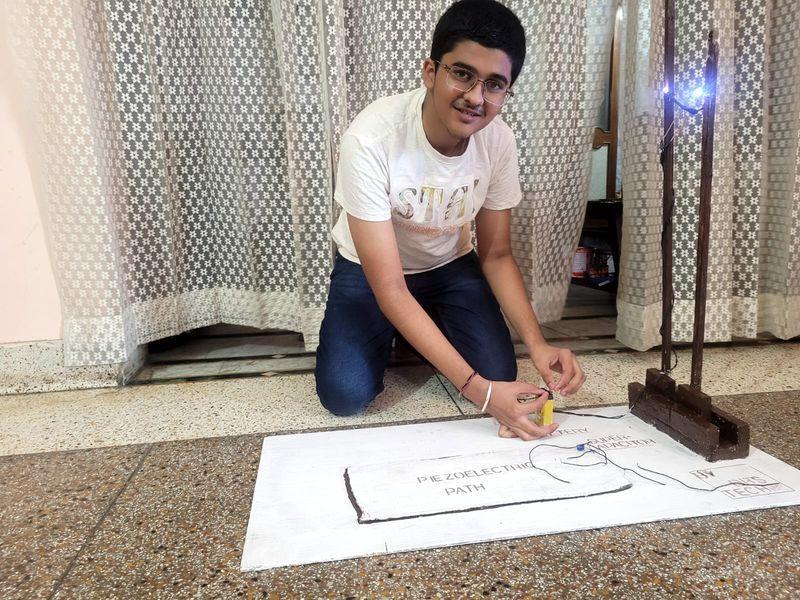
Title: Hoshiarpur Student Builds Device to Generate Power from Footsteps
In an astonishing feat of innovation, a Class 8 student from Hoshiarpur, Punjab, has developed a revolutionary device that harnesses energy from the simplest of human activities – walking. Sanchit, the young genius, has caught the attention of local authorities, scientists, and enthusiasts alike with his groundbreaking project, “Power beneath our feet.” This remarkable invention uses piezoelectric technology to convert footsteps into electricity, opening up new possibilities for sustainable power generation.
The concept of harnessing energy from human movement is not new, but Sanchit’s innovative approach has taken it to a whole new level. His device is designed to capture the kinetic energy generated by footsteps and convert it into electrical energy, which can be used to power small devices such as smartphones, lamps, or even homes.
The device consists of a series of piezoelectric sensors embedded in a specially designed floor or surface. As a person walks, the sensors detect the vibrations and convert them into electrical energy. This energy is then stored in a battery or capacitor, which can be used to power devices or charge electronic devices.
Sanchit’s project has not only impressed local authorities but has also caught the attention of scientists and engineers in the field of renewable energy. Dr. S.K. Arora, a scientist at the Punjab Engineering College, has praised Sanchit’s ingenuity, saying, “This is a remarkable achievement by a young student. The potential applications of this technology are vast, and it could have a significant impact on our energy landscape.”
The importance of sustainable energy solutions cannot be overstated. As the world grapples with the challenges of climate change, energy conservation, and sustainability, innovations like Sanchit’s are crucial in reducing our reliance on fossil fuels and mitigating the environmental impact of our daily activities.
Sanchit’s project is a testament to the power of innovation and creativity in addressing some of the world’s most pressing challenges. As a young student, he has demonstrated a remarkable understanding of the potential of piezoelectric technology and its applications in sustainable energy generation.
But what makes Sanchit’s project even more remarkable is the fact that it is designed to be accessible and affordable. The device is simple, easy to use, and can be installed in homes, offices, or public spaces, making it a viable solution for individuals and communities around the world.
The potential applications of Sanchit’s technology are vast and varied. Imagine walking into a room and having your phone charge automatically as you move around. Imagine a future where public spaces are equipped with energy-generating floors, providing free electricity to passersby. Imagine a world where energy poverty is a thing of the past, thanks to innovations like Sanchit’s.
As news of Sanchit’s project spreads, it is likely to inspire a new generation of innovators and entrepreneurs to pursue careers in renewable energy and sustainable technology. His achievement is a reminder that even the smallest ideas can have a significant impact on the world, and that innovation is within reach for anyone willing to think outside the box.
In conclusion, Sanchit’s project is a shining example of the power of innovation and creativity in addressing some of the world’s most pressing challenges. His device has the potential to transform the way we think about power generation, and it is a testament to the incredible talent and dedication of young minds like his.






